Last chance tourism refers to traveling to destinations that are at risk of significant environmental or cultural changes, often due to climate change, development, or other pressures. Here are some notable examples from the USA, Brazil, and the Maldives.
What is last chance tourism?
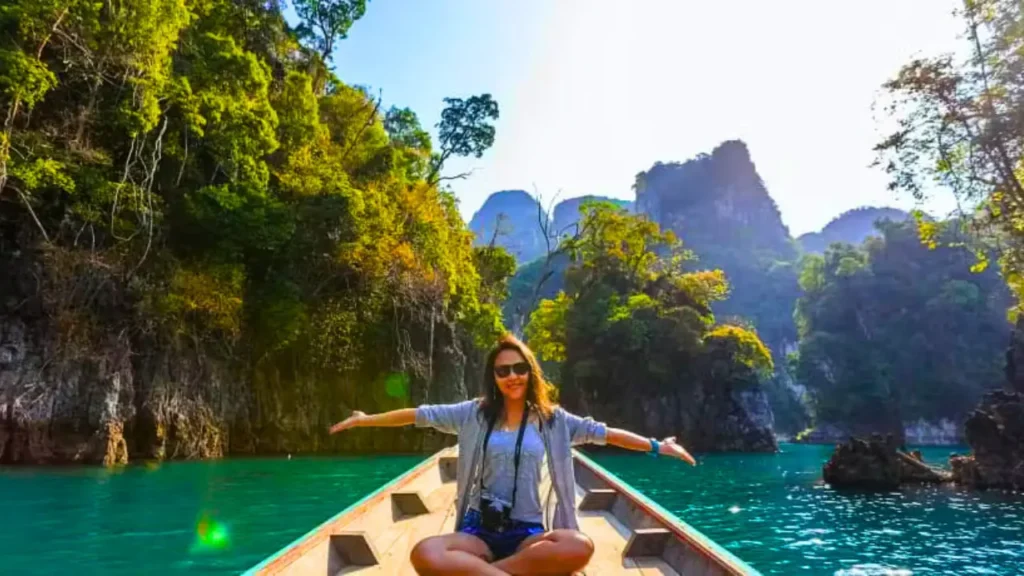
Last chance tourism pertains to the phenomenon of journeying to locales imperiled by profound environmental or cultural transformation, typically precipitated by exigencies such as climatic perturbations, anthropogenic encroachment, or ecological deterioration. This nomenclature underscores the imperative of engaging with these sites prior to their irrevocable modification or obliteration.
Tourists flock to witness the majestic glaciers and ice caves as they vanish before our eyes, yet the warming climate renders these once-stable wonders increasingly perilous.
USA’s Last Chance Tourism Destinations
Glacier National Park, Montana: A Time Capsule of Nature’s
For adventurous travelers and conservation enthusiasts, Glacier National Park in Montana presents a compelling last chance tourism destination. Renowned for its stunning landscapes, towering peaks, and pristine glaciers, this iconic park faces significant challenges from climate change. Visiting now offers a unique opportunity to experience its natural beauty while supporting efforts to preserve this remarkable landscape.
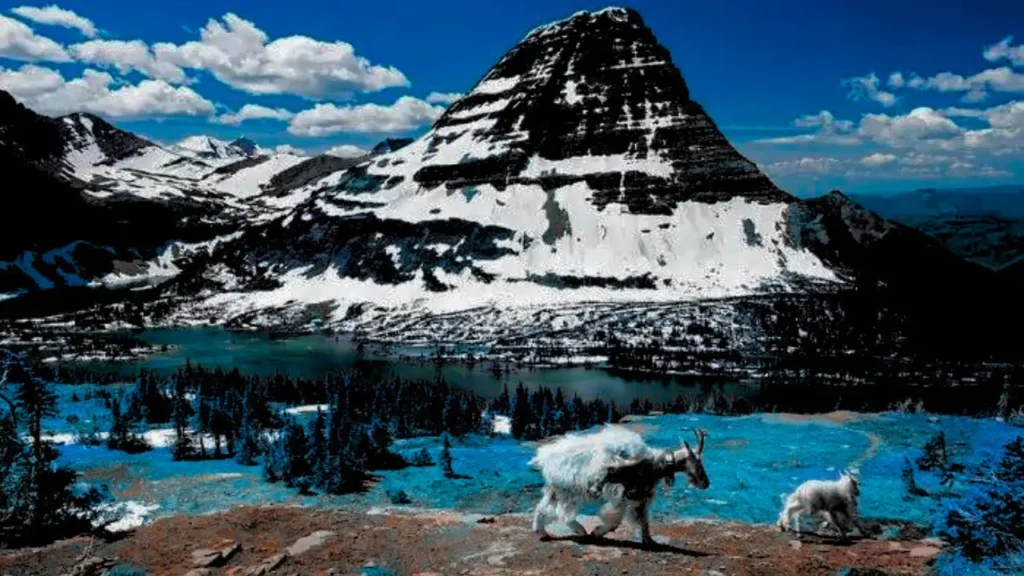
The Imperative of Glacier National Park
- Glacial Wonders: Glacier National Park is home to some of the last remaining glaciers in the contiguous United States. These glaciers are crucial indicators of climate change and contribute to the park’s breathtaking scenery.
- Biodiversity: The park boasts a diverse array of wildlife, including grizzly bears, mountain goats, and over 260 species of birds, as well as a rich variety of plant life.
- Scenic Beauty: The park’s rugged mountains, alpine lakes, and deep valleys offer some of the most dramatic and picturesque landscapes in North America.
Current trends about Glacier National Park Matters
- Glacial Retreat: The park’s glaciers are melting at an alarming rate due to rising temperatures. Scientists estimate that most of the park’s glaciers could be gone by the end of the decade.
- Climate Change: Warmer temperatures are affecting not only glaciers but also local ecosystems and wildlife, altering migration patterns and habitat conditions.
- Wildfires: Increased frequency and intensity of wildfires are threatening both the park’s flora and fauna and the overall landscape.
- Visitor Impact: The influx of visitors can strain park resources and impact sensitive environments if not managed sustainably.
Best time to visit Glacier National Park?
- Witness a Changing Landscape: Experience the majestic beauty of Glacier National Park’s glaciers and alpine scenery before they undergo irreversible changes.
- Support Conservation: Your visit can help fund conservation efforts and park management programs aimed at mitigating the effects of climate change and preserving the park’s unique features.
- Engage in Education: Learn about the impacts of climate change firsthand and gain a deeper understanding of the challenges faced by this iconic landscape.
- Advocate for Preservation: Use your experience to raise awareness about the importance of preserving natural wonders and supporting policies that address climate change.
Top Experiences for Last Chance Tourists
Glacier Viewing
- What to Expect: Take guided tours or hike to viewpoints offering breathtaking vistas of the park’s glaciers, including the iconic Grinnell Glacier and the scenic Hidden Lake.
- Why It Matters: Witnessing these glaciers provides a tangible understanding of climate change impacts and supports educational outreach about their preservation.
Scenic Drives
- What to Expect: Drive along the historic Going-to-the-Sun Road, a marvel of engineering that offers stunning views of the park’s landscapes, from alpine meadows to rugged mountain peaks.
- Why It Matters: This scenic route allows visitors to see a wide variety of ecosystems and geological features, all while supporting sustainable tourism practices.
Hiking Trails
- What to Expect: Explore some of the park’s renowned hiking trails, such as the Highline Trail or the Iceberg Lake Trail, which offer opportunities to experience diverse landscapes and spot wildlife.
- Why It Matters: Hiking provides an immersive experience of the park’s natural beauty and promotes physical activity while fostering a deeper connection to the environment.
Wildlife Viewing
- What to Expect: Observe the park’s diverse wildlife, including bighorn sheep, moose, and black bears, in their natural habitats through guided wildlife tours or self-guided exploration.
- Why It Matters: Seeing these species up close helps raise awareness about the importance of protecting their habitats and managing human-wildlife interactions responsibly.
Travel Tips for Responsible Tourism
- Choose Eco-Friendly Accommodations: Opt for lodging and tour operators that prioritize sustainable practices and contribute to conservation efforts.
- Follow Leave No Trace Principles: Adhere to park guidelines to minimize your impact on the environment, such as staying on designated trails and packing out all trash.
- Support Local Conservation Initiatives: Contribute to or volunteer with organizations focused on protecting Glacier National Park and its surrounding areas.
- Educate Yourself and Others: Take advantage of educational programs and visitor centers to learn more about the park’s challenges and conservation strategies.
Conclusion: Glacier National Park offers a poignant last chance tourism experience for those eager to witness its spectacular beauty and contribute to its preservation. By visiting now, you not only enjoy one of America’s most iconic natural landscapes but also play a role in supporting vital conservation efforts and raising awareness about the urgent need to address climate change.
New Orleans, Louisiana
Reason: New Orleans faces severe risks from rising sea levels and increased frequency of hurricanes. Efforts are ongoing to protect and preserve this culturally rich city.
Experience: Enjoy the vibrant culture, historic architecture, and unique culinary scene while supporting resilience efforts.
Brazil: Last Chance Tourism Destinations

Amazon Rainforest: A Last Chance Tourism Adventure
For those with a deep sense of adventure and a commitment to conservation, the Amazon Rainforest stands as a poignant destination for “last chance tourism.” Known as the “lungs of the Earth,” the Amazon is one of the most biodiverse places on the planet, yet it faces unprecedented threats from human activities. Visiting now not only offers a chance to witness its unparalleled beauty but also supports critical conservation efforts.
Why the Amazon Matters
- Biodiversity Hotspot: Home to approximately 10% of the world’s known species, including elusive jaguars, vibrant poison dart frogs, and rare pink river dolphins, the Amazon is a living testament to nature’s creativity.
- Climate Regulator: The rainforest plays a crucial role in regulating global weather patterns and absorbing carbon dioxide, making its preservation vital for combating climate change.
- Cultural Treasure: It is also the cradle of countless indigenous cultures, whose traditional knowledge and sustainable practices are integral to the rainforest’s health.
Current Threats about Amazon Rainforests
- Deforestation: The Amazon is losing forest cover at an alarming rate due to illegal logging, agricultural expansion, and infrastructure projects.
- Climate Change: Rising temperatures and changing rainfall patterns are disrupting the delicate balance of the ecosystem, leading to more frequent and intense wildfires.
- Mining and Oil Drilling: These industries are encroaching on protected areas, causing pollution and habitat destruction.
- Wildlife Trafficking: The illegal pet trade and hunting threaten many of the rainforest’s unique species.
Why Visit Now?
- Witness an Unparalleled Ecosystem: Experience the Amazon’s lush landscapes, diverse wildlife, and vibrant ecosystems before they are irreversibly changed.
- Support Conservation: Your visit can directly support conservation projects, from funding anti-poaching patrols to aiding reforestation efforts.
- Learn from Indigenous Communities: Engage with local tribes who are at the forefront of protecting the rainforest, gaining insights into their sustainable practices and deep connection to the land.
- Make a Difference: Raise awareness about the threats facing the Amazon and advocate for broader action through your experiences and stories.
Top Experiences for Last Chance Tourists: Amazon Rainforest
Guided Wildlife Tours
- What to Expect: Embark on expeditions with expert naturalists who can lead you to view rare species and understand their role in the ecosystem. Look out for elusive jaguars, colorful macaws, and giant river otters.
- Why It Matters: These tours often support local conservation efforts and provide valuable data for research.
River Cruises
- What to Expect: Navigate the Amazon’s intricate waterways on eco-friendly riverboats, spotting wildlife from the comfort of your cabin or during excursions.
- Why It Matters: River cruises offer a unique perspective on the rainforest and often include visits to remote communities and conservation projects.
Rainforest Treks
- What to Expect: Hike through the dense forest with experienced guides who can explain the complex layers of the ecosystem, from towering trees to the forest floor’s rich flora.
- Why It Matters: Treks highlight the intricate beauty of the rainforest and contribute to conservation education.
Cultural Immersion
- What to Expect: Spend time with indigenous groups inside amazon rainforests, learning about their traditional knowledge, crafts, and methods for living in harmony with the forest.
- Why It Matters: Supporting indigenous tourism helps sustain their cultures and empowers them to play a key role in conservation.
Travel Tips for Responsible Tourism
- Choose Eco-Conscious Operators: Look for companies that prioritize environmental and social responsibility, ensuring your visit benefits conservation and local communities.
- Follow Guidelines: Adhere to all guidelines for wildlife viewing and environmental protection to minimize your impact.
- Offset Your Carbon Footprint: Consider carbon offset programs to balance the environmental impact of your travel.
- Support Local Conservation Initiatives: Directly contribute to or volunteer with local conservation efforts during your visit.
The Amazon Rainforest is not just a destination; it’s a living, breathing entity under threat. For last chance tourism seekers, it offers a rare opportunity to experience one of the world’s most extraordinary places and contribute to its survival. Your visit can make a meaningful impact, supporting conservation efforts and raising awareness about the urgent need to protect this global treasure.
This version emphasizes the urgency of visiting, the unique experiences available, and the tangible ways tourists can make a positive impact on the Amazon Rainforest.
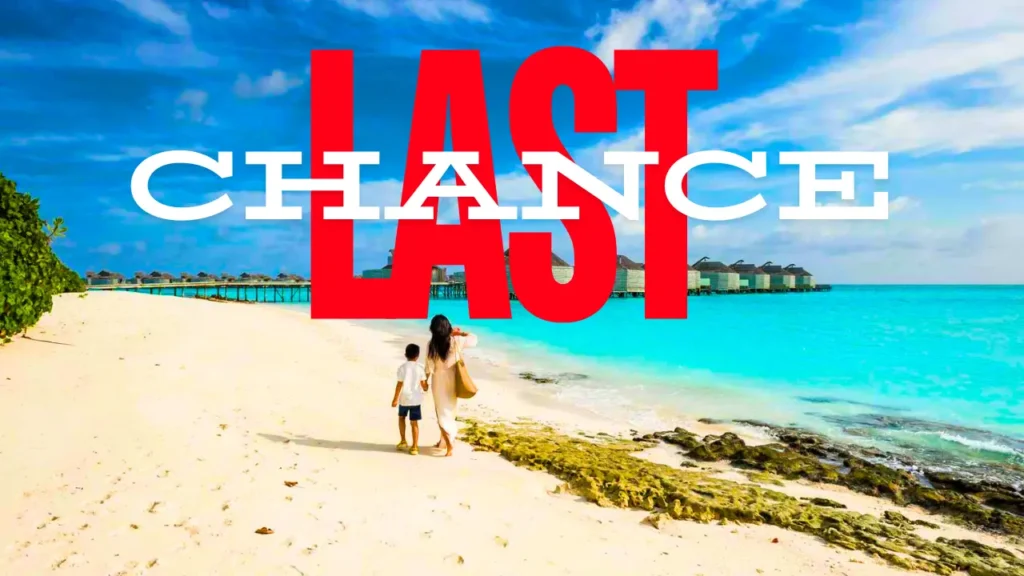
Pantanal Wetlands: Last Chance Tourism Destination
Certainly, if you are looking at the Pantanal Wetlands as a “last chance tourism” destination, it’s important to highlight the urgency and significance of visiting this unique ecosystem before it undergoes irreversible changes. Here’s how you might approach this:
Overview
- Location: Spread across Brazil, Bolivia, and Paraguay, with the majority in Brazil.
- Significance: One of the world’s largest tropical wetland areas, the Pantanal is renowned for its rich biodiversity, including jaguars, capybaras, and hundreds of bird species.
Current Threats
- Deforestation: Encroachment from agriculture and cattle ranching is significantly impacting the surrounding forested areas, affecting the wetland ecosystem.
- Climate Change: Altered rainfall patterns and rising temperatures are disrupting the seasonal flooding cycles crucial for maintaining the wetland.
- Wildfires: Increasing frequency and intensity of fires, often linked to drought and human activities, are damaging the wetland’s vegetation and wildlife.
- Water Management: Dam construction and changes in river flow can alter the wetland’s hydrology, impacting its ecological balance.
Why Visit Now?
- Witness Biodiversity: Experience the incredible diversity of wildlife, including rare species like the jaguar, which are increasingly threatened by habitat loss.
- Support Conservation: Your visit can provide crucial economic support to local communities and conservation efforts aimed at protecting the Pantanal.
- Raise Awareness: Seeing the impacts of environmental threats firsthand can help raise awareness about the importance of preserving this vital ecosystem.
Sustainable Tourism Tips for Pantanal
- Choose Eco-Friendly Operators: Opt for tour operators that prioritize sustainability and conservation. Look for certifications or affiliations with recognized environmental organizations.
- Respect Wildlife: Follow guidelines for wildlife viewing to minimize disturbance and avoid harming delicate ecosystems.
- Support Local Conservation Projects: Consider participating in or contributing to local conservation projects that focus on habitat restoration and wildlife protection.
- Reduce Your Carbon Footprint: Travel responsibly by minimizing your carbon footprint, which can include choosing flights with lower emissions or offsetting your travel carbon.
Experience Highlights
- Wildlife Safaris: Enjoy guided tours that offer opportunities to spot the Pantanal’s diverse wildlife, including capybaras, giant river otters, and various bird species.
- Boat Tours: Explore the wetland’s waterways by boat, providing a unique vantage point for observing wildlife and the intricate wetland ecosystem.
- Cultural Interaction: Engage with local communities to learn about their conservation efforts and traditional ways of life that are intertwined with the Pantanal.
By choosing the Pantanal Wetlands as a last chance tourism destination, you not only get to experience one of the world’s most unique and biodiverse ecosystems but also contribute to its preservation at a critical time.
Maldives Last Chance Tourism Destinations
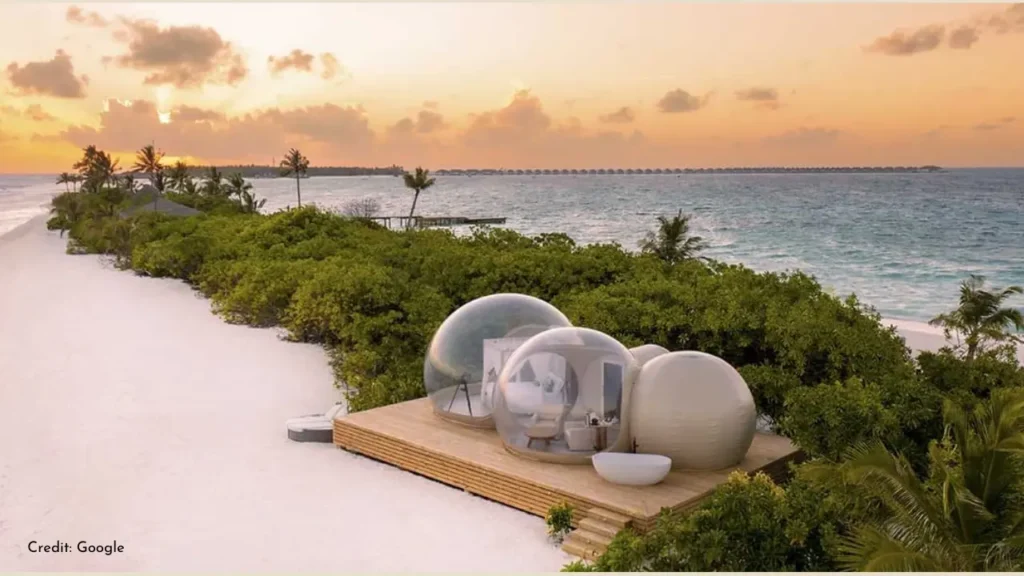
- Maldives Islands
- Reason: The Maldives is extremely vulnerable to rising sea levels due to its low elevation. Coastal erosion and coral reef bleaching are significant concerns.
- Baa Atoll
- Reason: This UNESCO Biosphere Reserve is facing environmental pressures including coral bleaching and overfishing. It’s a key site for marine biodiversity.
- Experience: Snorkeling and diving in the atoll provide an opportunity to witness rich marine life while contributing to conservation through responsible tourism.
Top 50 Last-Chance Destinations to Visit Now
For better understanding, here’s a comprehensive list of 50 last-chance tourism destinations across the USA, Brazil, Canada, India, and the Maldives. These locations are noteworthy for their ecological, cultural, or environmental significance and are facing various threats from climate change, development, or other pressures.
Last Chance Tourism Destinations in USA
- Glacier National Park, Montana – Rapid glacial retreat and climate change.
- Everglades National Park, Florida – Threats from water management and invasive species.
- Yellowstone National Park, Wyoming/Montana/Idaho – Impact from climate change and potential volcanic activity.
- Great Barrier Reef National Park, Australia – Coral bleaching and climate change.
- Yosemite National Park, California – Increased wildfire risk and ecological changes.
- Hawaii Volcanoes National Park, Hawaii – Volcanic activity and sea level rise.
- Denali National Park, Alaska – Glacial retreat and shifting wildlife patterns.
- Sequoia National Park, California – Threats to ancient giant sequoias from wildfires and climate change.
- Arches National Park, Utah – Erosion and climate impacts on rock formations.
- Joshua Tree National Park, California – Climate change affecting unique desert flora.
Brazil’s Last Chance Tourism attractions
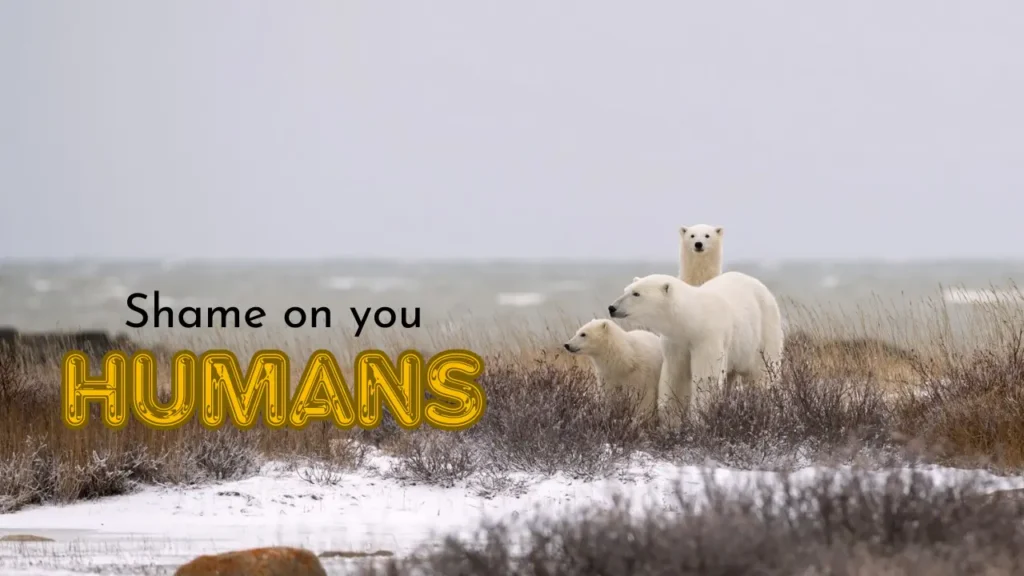
- Amazon Rainforest – Deforestation and climate change.
- Pantanal Wetlands – Habitat loss and fires.
- Iguaçu Falls – Drought and tourism pressures.
- Maranhão’s Lençóis Maranhenses National Park – Impact of climate change on desert landscapes and lagoons.
- Fernando de Noronha – Marine conservation challenges and tourism impact.
- Chapada Diamantina National Park – Deforestation and tourism impacts.
- Atlantic Forest (Mata Atlântica) – Fragmentation and biodiversity loss.
- Jalapão State Park – Increasing deforestation and development pressures.
- Serra dos Órgãos National Park – Climate impacts and urban sprawl.
- Itatiaia National Park – Effects of climate change on high-altitude ecosystems.
Last chance to see these locations in Canada
- Banff National Park, Alberta – Glacier retreat and tourism impacts.
- Jasper National Park, Alberta – Climate change affecting ecosystems and wildlife.
- Gros Morne National Park, Newfoundland and Labrador – Erosion and climate impacts.
- Yoho National Park, British Columbia – Glacial retreat and environmental changes.
- Nahanni National Park Reserve, Northwest Territories – Mining and ecological threats.
- Wood Buffalo National Park, Alberta/Northwest Territories – Threats from oil sands and climate change.
- Pacific Rim National Park Reserve, British Columbia – Sea level rise and conservation challenges.
- Prince Edward Island National Park – Coastal erosion and climate change.
- Kluane National Park, Yukon – Glacial retreat and ecosystem shifts.
- Auyuittuq National Park, Nunavut – Climate change impacting Arctic landscapes.
India’s last chance to see destinations
- Sundarbans National Park, West Bengal – Rising sea levels and habitat loss.
- Kaziranga National Park, Assam – Flooding and poaching threats.
- Ranthambore National Park, Rajasthan – Habitat fragmentation and human-wildlife conflict.
- Hemis National Park, Ladakh – Climate change affecting high-altitude ecosystems.
- Periyar Wildlife Sanctuary, Kerala – Deforestation and human encroachment.
- Gir National Park, Gujarat – Habitat loss and conservation challenges for Asiatic lions.
- Nanda Devi and Valley of Flowers National Parks, Uttarakhand – Climate change and biodiversity loss.
- Bandipur National Park, Karnataka – Human-wildlife conflict and habitat pressures.
- Silent Valley National Park, Kerala – Threats from deforestation and development.
- Great Himalayan National Park, Himachal Pradesh – Climate change impacts on alpine ecosystems.
Maldives last time to visit locations
- Malé Atoll – Rising sea levels threatening low-lying islands.
- Ari Atoll – Coral reef degradation and tourism pressures.
- Baa Atoll – Marine conservation challenges and climate impact.
- Laccadive Islands – Sea level rise and ecological pressures.
- Thaa Atoll – Threats to marine biodiversity and coral bleaching.
- Hinnavaru Island – Impact of climate change on local ecosystems.
- Raa Atoll – Environmental changes affecting marine life.
- Vaavu Atoll – Coral reef health and rising sea levels.
- Dhigurah Island – Coastal erosion and habitat loss.
- Fuvahmulah Atoll – Challenges from sea level rise and coral reef degradation.
Each of these destinations is notable for its unique environmental, cultural, or ecological significance and faces threats that underscore the importance of responsible, eco-conscious tourism to support their preservation and raise awareness of their plight.
When visiting these destinations, keep in mind, you are exploring these because you know the value of “Places to visit before they disappear”. Kindly consider supporting local conservation efforts and practicing sustainable tourism to help mitigate the impacts of these threats.
We’re at Travel and gear always looking for new ways to help people travel better. If you have any suggestions, please don’t hesitate to contact us. We’re always happy to hear from our readers.
![{"type":"elementor","siteurl":"https://travelngears.com/wp-json/","elements":[{"id":"cdf3f98","elType":"widget","isInner":false,"isLocked":false,"settings":{"title":"Best Places to Visit in the USA: Exploring the Land of Opportunities","link":{"url":"","is_external":"","nofollow":"","custom_attributes":""},"size":"default","header_size":"h1","align":"","align_tablet":"","align_mobile":"","view":"traditional","title_color":"#4C1062","typography_typography":"custom","typography_font_family":"Open Sans","typography_font_size":{"unit":"px","size":34,"sizes":[]},"typography_font_size_tablet":{"unit":"px","size":"","sizes":[]},"typography_font_size_mobile":{"unit":"px","size":"","sizes":[]},"typography_font_weight":"500","typography_text_transform":"","typography_font_style":"","typography_text_decoration":"","typography_line_height":{"unit":"px","size":"","sizes":[]},"typography_line_height_tablet":{"unit":"em","size":"","sizes":[]},"typography_line_height_mobile":{"unit":"em","size":"","sizes":[]},"typography_letter_spacing":{"unit":"px","size":"","sizes":[]},"typography_letter_spacing_tablet":{"unit":"px","size":"","sizes":[]},"typography_letter_spacing_mobile":{"unit":"px","size":"","sizes":[]},"typography_word_spacing":{"unit":"px","size":"","sizes":[]},"typography_word_spacing_tablet":{"unit":"em","size":"","sizes":[]},"typography_word_spacing_mobile":{"unit":"em","size":"","sizes":[]},"text_stroke_text_stroke_type":"","text_stroke_text_stroke":{"unit":"px","size":"","sizes":[]},"text_stroke_text_stroke_tablet":{"unit":"px","size":"","sizes":[]},"text_stroke_text_stroke_mobile":{"unit":"px","size":"","sizes":[]},"text_stroke_stroke_color":"#000","text_shadow_text_shadow_type":"","text_shadow_text_shadow":{"horizontal":0,"vertical":0,"blur":10,"color":"rgba(0,0,0,0.3)"},"blend_mode":"","_title":"","_margin":{"unit":"px","top":"","right":"","bottom":"","left":"","isLinked":true},"_margin_tablet":{"unit":"px","top":"","right":"","bottom":"","left":"","isLinked":true},"_margin_mobile":{"unit":"px","top":"","right":"","bottom":"","left":"","isLinked":true},"_padding":{"unit":"px","top":"","right":"","bottom":"","left":"","isLinked":true},"_padding_tablet":{"unit":"px","top":"","right":"","bottom":"","left":"","isLinked":true},"_padding_mobile":{"unit":"px","top":"","right":"","bottom":"","left":"","isLinked":true},"_element_width":"","_element_width_tablet":"","_element_width_mobile":"","_element_custom_width":{"unit":"%","size":"","sizes":[]},"_element_custom_width_tablet":{"unit":"px","size":"","sizes":[]},"_element_custom_width_mobile":{"unit":"px","size":"","sizes":[]},"_element_vertical_align":"","_element_vertical_align_tablet":"","_element_vertical_align_mobile":"","_position":"","_offset_orientation_h":"start","_offset_x":{"unit":"px","size":"0","sizes":[]},"_offset_x_tablet":{"unit":"px","size":"","sizes":[]},"_offset_x_mobile":{"unit":"px","size":"","sizes":[]},"_offset_x_end":{"unit":"px","size":"0","sizes":[]},"_offset_x_end_tablet":{"unit":"px","size":"","sizes":[]},"_offset_x_end_mobile":{"unit":"px","size":"","sizes":[]},"_offset_orientation_v":"start","_offset_y":{"unit":"px","size":"0","sizes":[]},"_offset_y_tablet":{"unit":"px","size":"","sizes":[]},"_offset_y_mobile":{"unit":"px","size":"","sizes":[]},"_offset_y_end":{"unit":"px","size":"0","sizes":[]},"_offset_y_end_tablet":{"unit":"px","size":"","sizes":[]},"_offset_y_end_mobile":{"unit":"px","size":"","sizes":[]},"_z_index":"","_z_index_tablet":"","_z_index_mobile":"","_element_id":"","_css_classes":"","motion_fx_motion_fx_scrolling":"","motion_fx_translateY_effect":"","motion_fx_translateY_direction":"","motion_fx_translateY_speed":{"unit":"px","size":4,"sizes":[]},"motion_fx_translateY_affectedRange":{"unit":"%","size":"","sizes":{"start":0,"end":100}},"motion_fx_translateX_effect":"","motion_fx_translateX_direction":"","motion_fx_translateX_speed":{"unit":"px","size":4,"sizes":[]},"motion_fx_translateX_affectedRange":{"unit":"%","size":"","sizes":{"start":0,"end":100}},"motion_fx_opacity_effect":"","motion_fx_opacity_direction":"out-in","motion_fx_opacity_level":{"unit":"px","size":10,"sizes":[]},"motion_fx_opacity_range":{"unit":"%","size":"","sizes":{"start":20,"end":80}},"motion_fx_blur_effect":"","motion_fx_blur_direction":"out-in","motion_fx_blur_level":{"unit":"px","size":7,"sizes":[]},"motion_fx_blur_range":{"unit":"%","size":"","sizes":{"start":20,"end":80}},"motion_fx_rotateZ_effect":"","motion_fx_rotateZ_direction":"","motion_fx_rotateZ_speed":{"unit":"px","size":1,"sizes":[]},"motion_fx_rotateZ_affectedRange":{"unit":"%","size":"","sizes":{"start":0,"end":100}},"motion_fx_scale_effect":"","motion_fx_scale_direction":"out-in","motion_fx_scale_speed":{"unit":"px","size":4,"sizes":[]},"motion_fx_scale_range":{"unit":"%","size":"","sizes":{"start":20,"end":80}},"motion_fx_transform_origin_x":"center","motion_fx_transform_origin_y":"center","motion_fx_devices":["desktop","tablet","mobile"],"motion_fx_range":"","motion_fx_motion_fx_mouse":"","motion_fx_mouseTrack_effect":"","motion_fx_mouseTrack_direction":"","motion_fx_mouseTrack_speed":{"unit":"px","size":1,"sizes":[]},"motion_fx_tilt_effect":"","motion_fx_tilt_direction":"","motion_fx_tilt_speed":{"unit":"px","size":4,"sizes":[]},"sticky":"","sticky_on":["desktop","tablet","mobile"],"sticky_offset":0,"sticky_offset_tablet":"","sticky_offset_mobile":"","sticky_effects_offset":0,"sticky_effects_offset_tablet":"","sticky_effects_offset_mobile":"","sticky_parent":"","_animation":"","_animation_tablet":"","_animation_mobile":"","animation_duration":"","_animation_delay":"","_transform_rotate_popover":"","_transform_rotateZ_effect":{"unit":"px","size":"","sizes":[]},"_transform_rotateZ_effect_tablet":{"unit":"deg","size":"","sizes":[]},"_transform_rotateZ_effect_mobile":{"unit":"deg","size":"","sizes":[]},"_transform_rotate_3d":"","_transform_rotateX_effect":{"unit":"px","size":"","sizes":[]},"_transform_rotateX_effect_tablet":{"unit":"deg","size":"","sizes":[]},"_transform_rotateX_effect_mobile":{"unit":"deg","size":"","sizes":[]},"_transform_rotateY_effect":{"unit":"px","size":"","sizes":[]},"_transform_rotateY_effect_tablet":{"unit":"deg","size":"","sizes":[]},"_transform_rotateY_effect_mobile":{"unit":"deg","size":"","sizes":[]},"_transform_perspective_effect":{"unit":"px","size":"","sizes":[]},"_transform_perspective_effect_tablet":{"unit":"px","size":"","sizes":[]},"_transform_perspective_effect_mobile":{"unit":"px","size":"","sizes":[]},"_transform_translate_popover":"","_transform_translateX_effect":{"unit":"px","size":"","sizes":[]},"_transform_translateX_effect_tablet":{"unit":"px","size":"","sizes":[]},"_transform_translateX_effect_mobile":{"unit":"px","size":"","sizes":[]},"_transform_translateY_effect":{"unit":"px","size":"","sizes":[]},"_transform_translateY_effect_tablet":{"unit":"px","size":"","sizes":[]},"_transform_translateY_effect_mobile":{"unit":"px","size":"","sizes":[]},"_transform_scale_popover":"","_transform_keep_proportions":"yes","_transform_scale_effect":{"unit":"px","size":"","sizes":[]},"_transform_scale_effect_tablet":{"unit":"px","size":"","sizes":[]},"_transform_scale_effect_mobile":{"unit":"px","size":"","sizes":[]},"_transform_scaleX_effect":{"unit":"px","size":"","sizes":[]},"_transform_scaleX_effect_tablet":{"unit":"px","size":"","sizes":[]},"_transform_scaleX_effect_mobile":{"unit":"px","size":"","sizes":[]},"_transform_scaleY_effect":{"unit":"px","size":"","sizes":[]},"_transform_scaleY_effect_tablet":{"unit":"px","size":"","sizes":[]},"_transform_scaleY_effect_mobile":{"unit":"px","size":"","sizes":[]},"_transform_skew_popover":"","_transform_skewX_effect":{"unit":"px","size":"","sizes":[]},"_transform_skewX_effect_tablet":{"unit":"deg","size":"","sizes":[]},"_transform_skewX_effect_mobile":{"unit":"deg","size":"","sizes":[]},"_transform_skewY_effect":{"unit":"px","size":"","sizes":[]},"_transform_skewY_effect_tablet":{"unit":"deg","size":"","sizes":[]},"_transform_skewY_effect_mobile":{"unit":"deg","size":"","sizes":[]},"_transform_flipX_effect":"","_transform_flipY_effect":"","_transform_rotate_popover_hover":"","_transform_rotateZ_effect_hover":{"unit":"px","size":"","sizes":[]},"_transform_rotateZ_effect_hover_tablet":{"unit":"deg","size":"","sizes":[]},"_transform_rotateZ_effect_hover_mobile":{"unit":"deg","size":"","sizes":[]},"_transform_rotate_3d_hover":"","_transform_rotateX_effect_hover":{"unit":"px","size":"","sizes":[]},"_transform_rotateX_effect_hover_tablet":{"unit":"deg","size":"","sizes":[]},"_transform_rotateX_effect_hover_mobile":{"unit":"deg","size":"","sizes":[]},"_transform_rotateY_effect_hover":{"unit":"px","size":"","sizes":[]},"_transform_rotateY_effect_hover_tablet":{"unit":"deg","size":"","sizes":[]},"_transform_rotateY_effect_hover_mobile":{"unit":"deg","size":"","sizes":[]},"_transform_perspective_effect_hover":{"unit":"px","size":"","sizes":[]},"_transform_perspective_effect_hover_tablet":{"unit":"px","size":"","sizes":[]},"_transform_perspective_effect_hover_mobile":{"unit":"px","size":"","sizes":[]},"_transform_translate_popover_hover":"","_transform_translateX_effect_hover":{"unit":"px","size":"","sizes":[]},"_transform_translateX_effect_hover_tablet":{"unit":"px","size":"","sizes":[]},"_transform_translateX_effect_hover_mobile":{"unit":"px","size":"","sizes":[]},"_transform_translateY_effect_hover":{"unit":"px","size":"","sizes":[]},"_transform_translateY_effect_hover_tablet":{"unit":"px","size":"","sizes":[]},"_transform_translateY_effect_hover_mobile":{"unit":"px","size":"","sizes":[]},"_transform_scale_popover_hover":"","_transform_keep_proportions_hover":"yes","_transform_scale_effect_hover":{"unit":"px","size":"","sizes":[]},"_transform_scale_effect_hover_tablet":{"unit":"px","size":"","sizes":[]},"_transform_scale_effect_hover_mobile":{"unit":"px","size":"","sizes":[]},"_transform_scaleX_effect_hover":{"unit":"px","size":"","sizes":[]},"_transform_scaleX_effect_hover_tablet":{"unit":"px","size":"","sizes":[]},"_transform_scaleX_effect_hover_mobile":{"unit":"px","size":"","sizes":[]},"_transform_scaleY_effect_hover":{"unit":"px","size":"","sizes":[]},"_transform_scaleY_effect_hover_tablet":{"unit":"px","size":"","sizes":[]},"_transform_scaleY_effect_hover_mobile":{"unit":"px","size":"","sizes":[]},"_transform_skew_popover_hover":"","_transform_skewX_effect_hover":{"unit":"px","size":"","sizes":[]},"_transform_skewX_effect_hover_tablet":{"unit":"deg","size":"","sizes":[]},"_transform_skewX_effect_hover_mobile":{"unit":"deg","size":"","sizes":[]},"_transform_skewY_effect_hover":{"unit":"px","size":"","sizes":[]},"_transform_skewY_effect_hover_tablet":{"unit":"deg","size":"","sizes":[]},"_transform_skewY_effect_hover_mobile":{"unit":"deg","size":"","sizes":[]},"_transform_flipX_effect_hover":"","_transform_flipY_effect_hover":"","_transform_transition_hover":{"unit":"px","size":"","sizes":[]},"motion_fx_transform_x_anchor_point":"","motion_fx_transform_x_anchor_point_tablet":"","motion_fx_transform_x_anchor_point_mobile":"","motion_fx_transform_y_anchor_point":"","motion_fx_transform_y_anchor_point_tablet":"","motion_fx_transform_y_anchor_point_mobile":"","_background_background":"","_background_color":"","_background_color_stop":{"unit":"%","size":0,"sizes":[]},"_background_color_b":"#f2295b","_background_color_b_stop":{"unit":"%","size":100,"sizes":[]},"_background_gradient_type":"linear","_background_gradient_angle":{"unit":"deg","size":180,"sizes":[]},"_background_gradient_position":"center center","_background_image":{"url":"","id":"","size":""},"_background_image_tablet":{"url":"","id":"","size":""},"_background_image_mobile":{"url":"","id":"","size":""},"_background_position":"","_background_position_tablet":"","_background_position_mobile":"","_background_xpos":{"unit":"px","size":0,"sizes":[]},"_background_xpos_tablet":{"unit":"px","size":0,"sizes":[]},"_background_xpos_mobile":{"unit":"px","size":0,"sizes":[]},"_background_ypos":{"unit":"px","size":0,"sizes":[]},"_background_ypos_tablet":{"unit":"px","size":0,"sizes":[]},"_background_ypos_mobile":{"unit":"px","size":0,"sizes":[]},"_background_attachment":"","_background_repeat":"","_background_repeat_tablet":"","_background_repeat_mobile":"","_background_size":"","_background_size_tablet":"","_background_size_mobile":"","_background_bg_width":{"unit":"%","size":100,"sizes":[]},"_background_bg_width_tablet":{"unit":"px","size":"","sizes":[]},"_background_bg_width_mobile":{"unit":"px","size":"","sizes":[]},"_background_video_link":"","_background_video_start":"","_background_video_end":"","_background_play_once":"","_background_play_on_mobile":"","_background_privacy_mode":"","_background_video_fallback":{"url":"","id":"","size":""},"_background_slideshow_gallery":[],"_background_slideshow_loop":"yes","_background_slideshow_slide_duration":5000,"_background_slideshow_slide_transition":"fade","_background_slideshow_transition_duration":500,"_background_slideshow_background_size":"","_background_slideshow_background_size_tablet":"","_background_slideshow_background_size_mobile":"","_background_slideshow_background_position":"","_background_slideshow_background_position_tablet":"","_background_slideshow_background_position_mobile":"","_background_slideshow_lazyload":"","_background_slideshow_ken_burns":"","_background_slideshow_ken_burns_zoom_direction":"in","_background_hover_background":"","_background_hover_color":"","_background_hover_color_stop":{"unit":"%","size":0,"sizes":[]},"_background_hover_color_b":"#f2295b","_background_hover_color_b_stop":{"unit":"%","size":100,"sizes":[]},"_background_hover_gradient_type":"linear","_background_hover_gradient_angle":{"unit":"deg","size":180,"sizes":[]},"_background_hover_gradient_position":"center center","_background_hover_image":{"url":"","id":"","size":""},"_background_hover_image_tablet":{"url":"","id":"","size":""},"_background_hover_image_mobile":{"url":"","id":"","size":""},"_background_hover_position":"","_background_hover_position_tablet":"","_background_hover_position_mobile":"","_background_hover_xpos":{"unit":"px","size":0,"sizes":[]},"_background_hover_xpos_tablet":{"unit":"px","size":0,"sizes":[]},"_background_hover_xpos_mobile":{"unit":"px","size":0,"sizes":[]},"_background_hover_ypos":{"unit":"px","size":0,"sizes":[]},"_background_hover_ypos_tablet":{"unit":"px","size":0,"sizes":[]},"_background_hover_ypos_mobile":{"unit":"px","size":0,"sizes":[]},"_background_hover_attachment":"","_background_hover_repeat":"","_background_hover_repeat_tablet":"","_background_hover_repeat_mobile":"","_background_hover_size":"","_background_hover_size_tablet":"","_background_hover_size_mobile":"","_background_hover_bg_width":{"unit":"%","size":100,"sizes":[]},"_background_hover_bg_width_tablet":{"unit":"px","size":"","sizes":[]},"_background_hover_bg_width_mobile":{"unit":"px","size":"","sizes":[]},"_background_hover_video_link":"","_background_hover_video_start":"","_background_hover_video_end":"","_background_hover_play_once":"","_background_hover_play_on_mobile":"","_background_hover_privacy_mode":"","_background_hover_video_fallback":{"url":"","id":"","size":""},"_background_hover_slideshow_gallery":[],"_background_hover_slideshow_loop":"yes","_background_hover_slideshow_slide_duration":5000,"_background_hover_slideshow_slide_transition":"fade","_background_hover_slideshow_transition_duration":500,"_background_hover_slideshow_background_size":"","_background_hover_slideshow_background_size_tablet":"","_background_hover_slideshow_background_size_mobile":"","_background_hover_slideshow_background_position":"","_background_hover_slideshow_background_position_tablet":"","_background_hover_slideshow_background_position_mobile":"","_background_hover_slideshow_lazyload":"","_background_hover_slideshow_ken_burns":"","_background_hover_slideshow_ken_burns_zoom_direction":"in","_background_hover_transition":{"unit":"px","size":"","sizes":[]},"_border_border":"","_border_width":{"unit":"px","top":"","right":"","bottom":"","left":"","isLinked":true},"_border_width_tablet":{"unit":"px","top":"","right":"","bottom":"","left":"","isLinked":true},"_border_width_mobile":{"unit":"px","top":"","right":"","bottom":"","left":"","isLinked":true},"_border_color":"","_border_radius":{"unit":"px","top":"","right":"","bottom":"","left":"","isLinked":true},"_border_radius_tablet":{"unit":"px","top":"","right":"","bottom":"","left":"","isLinked":true},"_border_radius_mobile":{"unit":"px","top":"","right":"","bottom":"","left":"","isLinked":true},"_box_shadow_box_shadow_type":"","_box_shadow_box_shadow":{"horizontal":0,"vertical":0,"blur":10,"spread":0,"color":"rgba(0,0,0,0.5)"},"_box_shadow_box_shadow_position":" ","_border_hover_border":"","_border_hover_width":{"unit":"px","top":"","right":"","bottom":"","left":"","isLinked":true},"_border_hover_width_tablet":{"unit":"px","top":"","right":"","bottom":"","left":"","isLinked":true},"_border_hover_width_mobile":{"unit":"px","top":"","right":"","bottom":"","left":"","isLinked":true},"_border_hover_color":"","_border_radius_hover":{"unit":"px","top":"","right":"","bottom":"","left":"","isLinked":true},"_border_radius_hover_tablet":{"unit":"px","top":"","right":"","bottom":"","left":"","isLinked":true},"_border_radius_hover_mobile":{"unit":"px","top":"","right":"","bottom":"","left":"","isLinked":true},"_box_shadow_hover_box_shadow_type":"","_box_shadow_hover_box_shadow":{"horizontal":0,"vertical":0,"blur":10,"spread":0,"color":"rgba(0,0,0,0.5)"},"_box_shadow_hover_box_shadow_position":" ","_border_hover_transition":{"unit":"px","size":"","sizes":[]},"_mask_switch":"","_mask_shape":"circle","_mask_image":{"url":"","id":"","size":""},"_mask_notice":"","_mask_size":"contain","_mask_size_tablet":"","_mask_size_mobile":"","_mask_size_scale":{"unit":"%","size":100,"sizes":[]},"_mask_size_scale_tablet":{"unit":"px","size":"","sizes":[]},"_mask_size_scale_mobile":{"unit":"px","size":"","sizes":[]},"_mask_position":"center center","_mask_position_tablet":"","_mask_position_mobile":"","_mask_position_x":{"unit":"%","size":0,"sizes":[]},"_mask_position_x_tablet":{"unit":"px","size":"","sizes":[]},"_mask_position_x_mobile":{"unit":"px","size":"","sizes":[]},"_mask_position_y":{"unit":"%","size":0,"sizes":[]},"_mask_position_y_tablet":{"unit":"px","size":"","sizes":[]},"_mask_position_y_mobile":{"unit":"px","size":"","sizes":[]},"_mask_repeat":"no-repeat","_mask_repeat_tablet":"","_mask_repeat_mobile":"","hide_desktop":"","hide_tablet":"","hide_mobile":"","_attributes":"","custom_css":""},"defaultEditSettings":{"defaultEditRoute":"content"},"elements":[],"widgetType":"heading","editSettings":{"defaultEditRoute":"content","panel":{"activeTab":"style","activeSection":"section_title_style"}},"htmlCache":""}]}](https://travelngears.com/wp-content/uploads/2023/06/Best-Places-to-Visit-in-the-USA-Exploring-the-Land-of-Opportunities_-1-1024x576.png)




